Bankroll management for sports betting: the ultimate guide
09.10.2024
Bankroll management for sports betting: the ultimate guide
09.10.2024Effective bankroll management is essential for success in sports betting, especially for those working within the affiliate program. Whether you’re a seasoned bettor or a beginner, understanding how to manage your bankroll effectively can be the difference between long-term success and going bust. In this guide, we’ll explore how you can implement bankroll management strategies to enhance your betting efforts and, by extension, increase your success as a Vivatbet affiliate.
What is bankroll management in sports betting?
Bankroll management sports betting refers to the process of managing your betting funds in a way that minimizes risk and maximizes your chances of long-term success. For Vivatbet affiliates, understanding and applying these principles not only helps in personal betting success, but also in guiding the bettors you refer to the platform. By promoting responsible gambling practices, you build trust with your audience, which can lead to higher retention rates and more consistent commissions.
Why is bankroll management important?
Bankroll management is crucial because it helps you avoid the common pitfall of chasing losses. Without a proper plan, it’s easy to get carried away and bet more than you can afford, leading to significant losses. Encouraging bettors to manage their funds wisely helps them avoid the common pitfalls of chasing losses, which can lead to significant financial issues. As an affiliate, your success is closely tied to the satisfaction and success of the players you bring to Vivatbet. Therefore, promoting effective bankroll management is a win-win situation.
The role of discipline in bankroll management
Discipline is the cornerstone of successful bankroll management and a trait that every successful Vivatbet affiliate should encourage in their audience. No matter how effective a betting strategy might be, without the discipline to stick to a bankroll management plan, bettors are likely to experience setbacks. Affiliates who emphasize the importance of discipline help create a more informed and responsible betting community on Vivatbet, which can enhance the overall reputation of the platform.
What is a unit in betting?
A foundational concept in bankroll management is understanding what a unit is in betting. For Vivatbet affiliates, explaining this concept clearly to your audience can help them make more informed decisions. A unit represents a standardized amount of money wagered on each bet, typically a small percentage of the overall bankroll. By educating bettors on the importance of using units instead of fixed amounts, you help them protect their bankroll and increase their chances of long-term success on Vivatbet.
How much is a unit in betting?
A unit of betting usually ranges from 1% to 5% of your total bankroll. For example, if your bankroll is $1,000, and you decide that 1% of your bankroll is your unit, then each unit would be $10. The size of your unit should depend on your risk tolerance and the types of bets you’re placing. Conservative bettors might stick to 1-2% per unit, while those more comfortable with risk might go up to 4-5%.
Using units instead of fixed amounts allows you to scale your bets according to your bankroll. This method helps protect your bankroll during losing streaks and maximizes your potential profits during winning streaks. It also standardizes your betting, making it easier to track performance and adjust strategies as needed.
Sports betting bankroll management: key strategies
Sports betting bankroll management you can promote several bankroll management strategies that align with the platform’s offerings. These strategies protect the bettor’s funds and enhance the sustainability of their betting activities.
Flat betting strategy
The flat betting strategy involves betting the same unit size on every bet, regardless of confidence level or odds. This strategy is simple and minimizes the risk of large losses. For Vivatbet affiliates, promoting this strategy can help your referred bettors manage their bankroll more effectively, leading to a more consistent betting experience.
Percentage betting strategy
Percentage betting involves betting a fixed percentage of the current bankroll on each wager. This strategy is dynamic and adjusts as the bettor’s bankroll changes. Vivatbet affiliates can encourage this strategy to help bettors maximize profits during winning streaks while minimizing losses during downturns.
Kelly criterion
The Kelly Criterion is an advanced bankroll management strategy that determines the optimal size of a bet based on the perceived edge. While potentially profitable, it requires precise probability estimates, making it more suitable for experienced bettors. Affiliates can introduce this strategy to bettors looking to take their Vivatbet experience to the next level, while also emphasizing the importance of accuracy in their calculations.
Gambling bankroll management: beyond sports betting
As part of the Vivatbet affiliate program, it’s important to promote responsible gambling practices. Bankroll management sports betting is a key aspect of this, and by encouraging bettors to manage their funds wisely, you contribute to a healthier betting environment. This not only improves the experience for your referrals but also strengthens your relationship with them, leading to better retention rates and potentially higher earnings from the Vivatbet affiliate program.
Poker bankroll management
Poker bankroll management is particularly significant because of the game’s variance. In poker, even skilled players can experience long losing streaks, so managing your bankroll effectively is crucial. Many poker players adhere to strict bankroll management rules, such as only playing in games where the buy-in is a small percentage of their total bankroll (often around 1-2%).
Casino gambling bankroll management
In casino games, the house always has an edge, so bankroll management is even more critical. A common strategy is to set a loss limit, which is the maximum amount you’re willing to lose in a session. Once you hit this limit, you stop playing, regardless of how tempting it might be to continue.
Common mistakes in bankroll management
Even with a solid understanding of bankroll management, many bettors fall into common traps that can deplete their funds quickly. Here are some mistakes to avoid:
- • Chasing losses
Chasing losses occurs when a bettor tries to win back lost money by making larger or riskier bets. This is a dangerous practice that can lead to even greater losses. Effective bankroll management involves sticking to your unit size, regardless of recent losses.
- • Ignoring bankroll management
Some bettors neglect bankroll management entirely, betting arbitrarily without considering their total funds. This lack of structure can quickly lead to financial ruin, especially in a volatile activity like sports betting.
- • Overestimating your edge
Overestimating your edge is a common mistake, especially for bettors who have had recent success. Assuming that you can consistently beat the bookmaker without regard to variance can lead to over-betting and significant losses. Always stay grounded and stick to your bankroll management plan.
Adjusting your bankroll management strategy
As you gain experience in sports betting, you may find it necessary to adjust your bankroll management strategy. Here are some scenarios where adjustments might be warranted:
- • Bankroll growth
If your bankroll grows significantly, you might consider adjusting your unit size. However, it’s essential to remain cautious and not increase your unit size too quickly. A gradual increase allows you to continue betting responsibly while capitalizing on your success.
- • Declining bankroll
If your bankroll declines, reducing your unit size is a prudent move. This adjustment helps protect your remaining funds and gives you a better chance of bouncing back during a winning streak.
- • Changing bet types
If you start experimenting with different types of bets (e.g., parlays, futures), you may need to adjust your bankroll management strategy accordingly. These types of bets often come with higher risk and may require a smaller unit size to manage that risk effectively.
Advanced bankroll management strategies for sports betting
Now that we’ve covered the fundamentals of bankroll management in sports betting, it’s time to delve deeper into more advanced strategies. These approaches are designed for bettors who have a solid grasp of the basics and are looking to refine their techniques for improved performance.
The Importance of understanding variance
One of the most important concepts in advanced bankroll management is understanding variance. Variance refers to the fluctuations in your betting results due to the inherent uncertainty in sports outcomes. Even if you make the right decisions based on sound analysis, the outcomes of individual bets can be unpredictable. Recognizing and managing variance is crucial for maintaining a stable bankroll over time.
The psychological impact of variance
Variance can have a significant psychological impact on bettors, especially during losing streaks. It’s essential to remain calm and not let short-term losses affect your long-term strategy. A well-managed bankroll allows you to weather the storm of variance without making impulsive decisions that could jeopardize your financial stability.
Staking plans: finding the right fit for your style
Staking plans are advanced bankroll management techniques that help you determine the optimal amount to wager on each bet. There are several types of staking plans, each with its advantages and drawbacks. The key is to find a plan that suits your betting style, risk tolerance, and goals.
Fixed staking plan
The fixed staking plan involves betting a consistent percentage of your bankroll on every wager. This method is straightforward and reduces the risk of significant losses. However, it may limit your potential profits during winning streaks.
Percentage staking plan
The percentage staking plan is similar to the fixed staking plan but with a dynamic twist. Instead of betting the same amount every time, you bet a fixed percentage of your current bankroll. This means that your bet size increases when you’re winning and decreases when you’re losing, which can help protect your bankroll during downturns.
Proportional staking plan
The proportional staking plan involves betting an amount proportional to the perceived edge you have on a particular wager. For example, if you believe you have a higher probability of winning a bet, you might wager more units. This plan can be highly effective for experienced bettors who can accurately assess their edge, but it carries a higher risk if those assessments are incorrect.
Bankroll segmentation
Another advanced strategy is bankroll segmentation, which involves dividing your bankroll into different segments based on the types of bets you place or the sports you bet on. This approach can help you manage risk more effectively by ensuring that losses in one area don’t completely wipe out your bankroll.
Example of bankroll segmentation
Suppose you have a $5,000 bankroll. You might decide to allocate $2,500 for NFL betting, $1,500 for NBA betting, and $1,000 for soccer betting. This segmentation allows you to tailor your staking plan and bet sizes to each sport’s unique characteristics and variance. Additionally, it prevents a bad run in one sport from depleting your entire bankroll.
Leveraging multiple bankrolls
For professional bettors or those with substantial experience, managing multiple bankrolls across different betting accounts or sports can be an effective strategy. Each bankroll is managed separately, allowing for targeted strategies based on specific betting opportunities or conditions.
Risk management across bankrolls
When managing multiple bankrolls, it’s essential to consider the correlation between different sports or betting markets. For example, if two bankrolls are heavily reliant on the same sport or market, poor performance in that area could simultaneously impact both bankrolls. Diversifying your betting activities across unrelated sports or markets can help mitigate this risk.
Tips for effective sports betting bankroll management
To wrap up this guide, here are some practical tips to help you manage your sports betting bankroll effectively:
- 1. Set a Budget. Determine how much money you can afford to lose and set that amount as your bankroll. Never bet money that you can’t afford to lose.
- 2. Track Your Bets. Keep detailed records of your bets, including the amount wagered, the odds, and the outcome. This data will help you evaluate your performance and make informed adjustments to your strategy.
- 3. Stay Disciplined. Stick to your bankroll management plan, regardless of winning or losing streaks. Consistency is key to long-term success.
- 4. Avoid Emotional Betting. Don’t let emotions dictate your betting decisions. Stay rational and stick to your strategy, even when things aren’t going your way.
- 5. Review and Adjust. Regularly review your bankroll management strategy and make adjustments as needed based on your performance and changes in your bankroll.
Effective bankroll management is not just about preserving your betting funds; it’s also about creating a sustainable betting environment for your audience. As a Vivatbet affiliate, you have the unique opportunity to guide your referred players towards responsible betting practices, which can lead to more successful outcomes for everyone involved. By focusing on education and promoting the right strategies, you can enhance your success in the Vivatbet affiliate program, while also contributing to a more positive betting community.
FAQ about bankroll management in sports betting
What is Bankroll in Betting?
A bankroll in betting refers to the total amount of money that a bettor has set aside specifically for wagering on sports or other forms of gambling. Proper bankroll management ensures that this money is used responsibly to increase the chances of long-term profitability.
How Much Should I Bet Per Unit?
The amount you should bet per unit typically ranges from 1% to 5% of your total bankroll. Conservative bettors might choose 1-2%, while those comfortable with more risk might opt for 3-5%.
What is a Safe Betting Bankroll?
A safe betting bankroll is one that allows you to sustain long-term betting activities without the risk of going bust. This typically means betting small percentages of your bankroll per wager and avoiding high-risk bets that could deplete your funds quickly.
How Do I Recover from a Losing Streak?
Recovering from a losing streak involves staying disciplined and sticking to your bankroll management plan. Avoid the temptation to chase losses, and consider reducing your unit size until you regain confidence and stability in your betting performance.
Recent posts

How to Negotiate Higher Affiliate Commissions in Finland — Data-Driven Strategies for Win-Win Deals
Negotiating higher commissions with affiliate programs in Finland works best when you use a structured, data-driven approach. The market is competitive, and affiliates who present…

How to Build a Multi-Level Betting Affiliate Network — From Technical Setup to Performance Optimization
To make a big group of friends who sell for you in the casino you need to start well, see how good they do, and…

Top Sports Betting Affiliate Programs in Finland – Complete 2025 Guide
Finland rewards careful planning and clear user paths. Hockey and football spikes shape weekly intent across search and social. In this context, sports betting affiliate…

